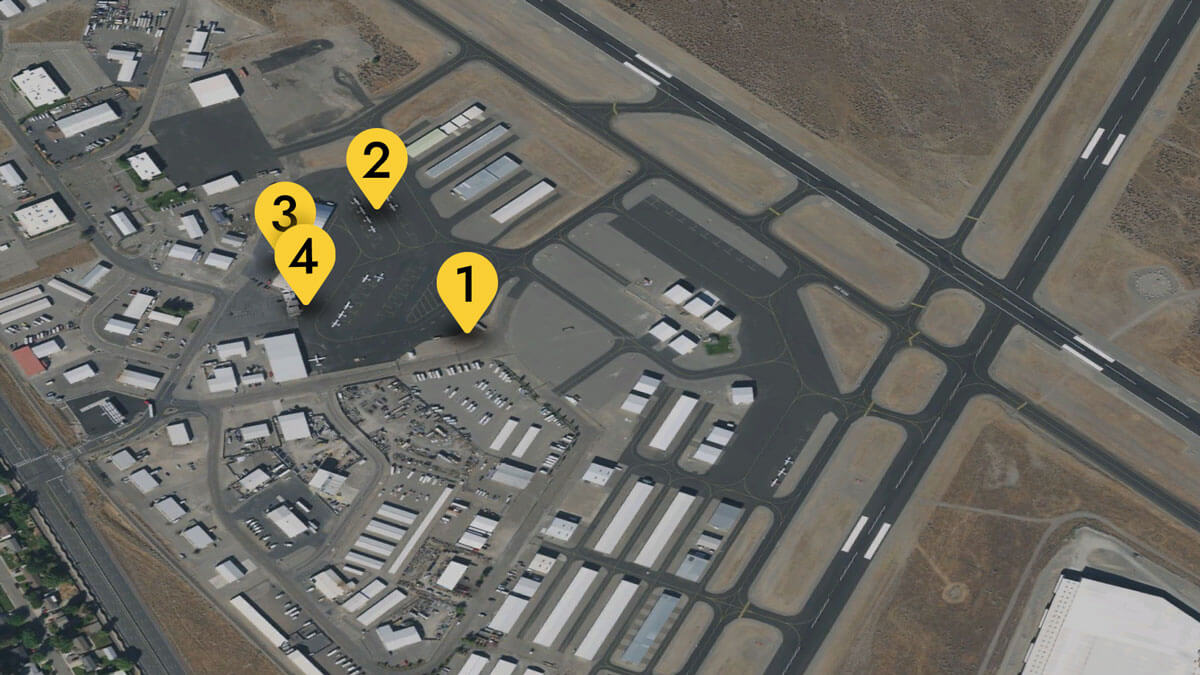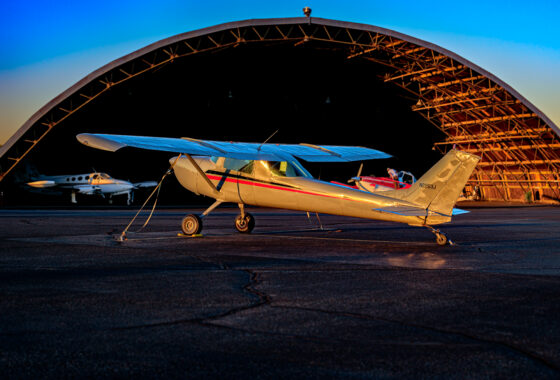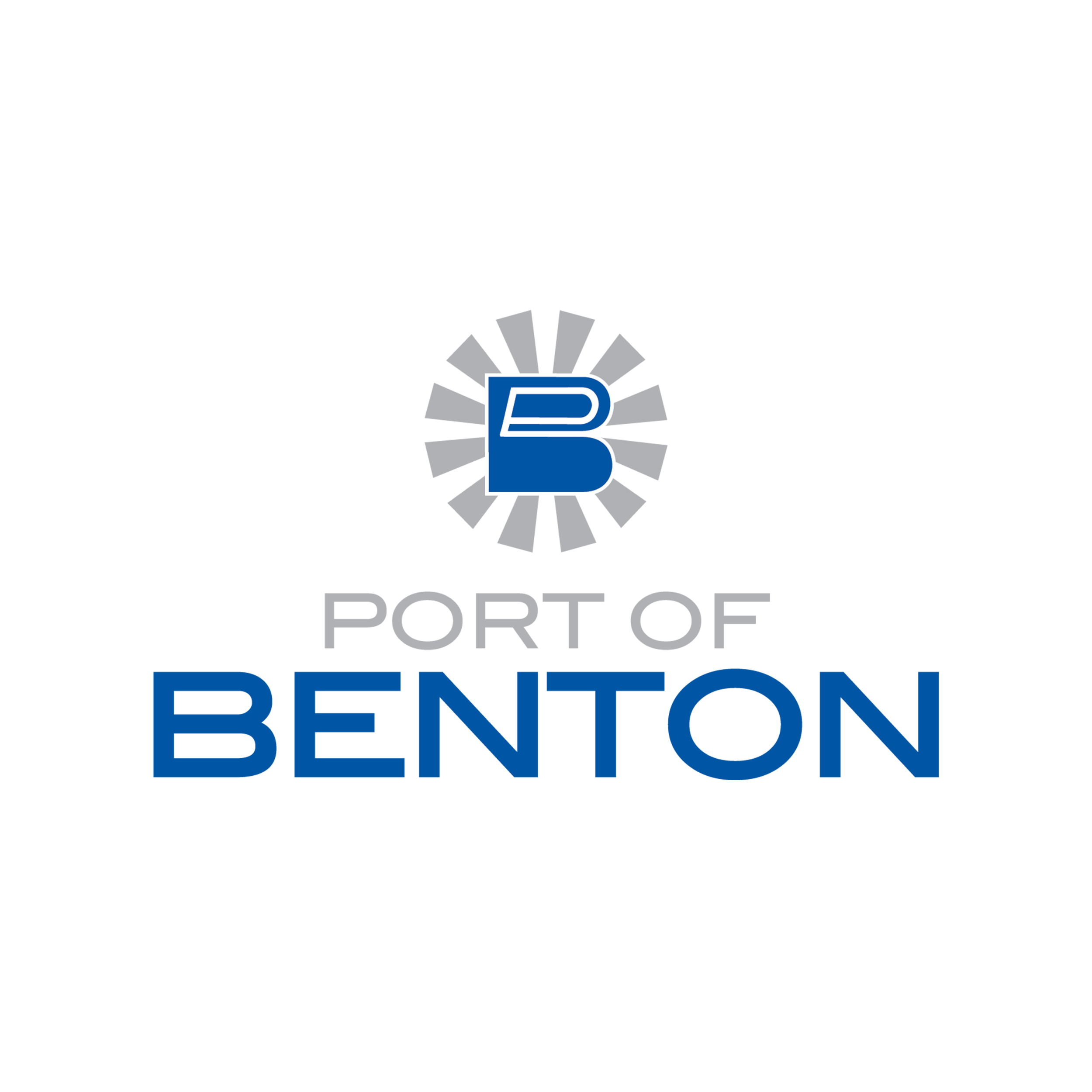Richland Airport &
Pilot Information

- 1. Fuel
- 2. Tie Downs
- 3. Fixed Base Operator and Pilot Lounge
- 4. Restaurant
Pilot & Airport Information Richland Airport (RLD)
Weather
Automated Weather Observing System (AWOS)
An Automated Weather Observing System is in place at the Richland Airport. You can access this information by phone: 509-375-4247 or by frequency 132.675 MHz.
Fuel
Avgas 100LL and Jet A is available 24 hours via credit card. Jet A fuel is available by truck during normal business hours; contact FBO for availability.
Pilot Lounge
The pilot lounge is open during normal business hours. After hours it has a numeric keylock number that can be obtained through the Pasco Airport Tower.
- Free Wi-Fi
- Phone
- HDTV
- Lounge area
- Restroom
- Restaurants nearby
Hangar & Tie Downs Information
Hangars: All hangars are privately owned. Contact the airport manager for available land lease information if you are interested in building a hangar at the airport.
Tie Downs: The Richland Airport has 150 tie-downs and a no-fee policy for up to seven days. There are no landing fees or terminal use fees.
Fixed Base Operator
There is one Fixed Based Operator at Richland Airport that can be reached at (509) 946-2515. View AirNav for current FBO availability and services.
Mechanical & Other Services
- Transient Storage: Tie Down
- Airframe Repairs: Major
- Powerplant Repairs: Major
- Other Services: Air Ambulance (AMB), Ground (GRD), Instruction (INSTR), Aircraft Rental (RNTL)
- Bulk Oxygen: High
- Bottle Oxygen: None
Contact
Quentin Wright
Airport Manager
Major Projects
Public Meetings
- March 13, 2024
- Richland Public Library, 5 p.m.
- 2024 Project Updates
Hangar Lease Information
Longitude & Latitude
Physical Address
1903 Terminal Drive
Richland, WA 99354
Plans & Policy Documents
2022 Approved Policies and Standard Leases
Reports
Bid Opportunities
Public Notices
Drones, Obstructions, and DBE
The operator is responsible for ensuring that all Federal Aviation Administration (FAA) regulations and Washington state laws are followed. Each time you consider a flight, be sure to:
- Check the FAA website for rule and guidance updates for Unmanned Aircraft Systems (UAS)
- Know the three main steps to fly under 14 CRF Part 107
- Review the Know Before You Fly campaign
- Review FAA’s Hot Topics and FAQs
- Download the FAA’s B4UFLY app or other industry mapping apps for the UAS user
Please see the updated FAA guidance below for UAS flights near the airport.
Airports in Uncontrolled Airspace
For flights near airports in uncontrolled airspace that remain under 400’ above the ground, prior authorization is not required. When flying in these areas, remote pilots and recreational flyers must be aware of and avoid traffic patterns and takeoff and landing areas. A drone must not interfere with operations at the airport must yield right-of-way to all other aircraft. Uncontrolled airspace and other flying restrictions can be found on our B4UFLY app.
Obstruction evaluations are vital to keeping air traffic operations safe. These evaluations apply to all construction taking place at the airport, and many projects outside the airport. Obstruction evaluations often apply to buildings, antennas, towers, cranes (even temporary) and other structures that have the potential to interfere with airspace, aircraft approaches and ground equipment located at the airport.
If you have questions regarding your project, please contact the Airport Manager at 509-375-3060.
According to 14 CFR Part 77.9, any person or organization must notify the FAA Administrator if they intend to sponsor any of the following construction or alterations:
- Construction or alteration exceeding 200 feet above ground level
- Construction or alteration:
- Within 20,000 feet of a public use or military airport which exceeds a 100:1 surface from any point on the runway of each airport with its longest runway more than 3,200 feet
- Within 10,000 feet of a public use or military airport that exceeds a 50:1 surface from any point on the runway of each airport with its longest runway no more than 3,200 feet
- Within 5,000 feet of a public use heliport that exceeds a 25:1 surface
- Highway, railroad or other traverse way whose prescribed adjusted height would exceed the above-noted standards
- When requested by the FAA
- Construction or alteration located on a public-use airport or heliport regardless of height or location
Visit the FAA’s Obstruction Evaluation / Airport Airspace Analysis webpage for more information regarding whether or not you will need to file FAA Form 7460-1.
Additional information can be found on the Washington State Department of Transportation obstruction evaluation webpage.
To learn more about the Port’s Disadvantaged Business Enterprise Program, visit our Disadvantaged Business Enterprises webpage.
NOTICE
Port of Benton’s FY 2021-2023 Disadvantaged Business Enterprises goal for the Richland Airport is 0.26% DBE Participation to be obtained through 0.26% race-neutral and 0.00% race-conscious means.
A copy of the DBE goal and the calculations used to determine this goal may be obtained by contacting Bryan Condon, Century West Engineering, at bcondon@centurywest.com.
Rules & Regulations Frequently Asked Questions
The FAA is fairly clear here. FAA’s policy states that the primary purpose of a hangar must be “parking an operational airplane” or the “non-commercial construction of amateur-built or kit-built aircraft.” The storage of other items within the hangar is allowed if it “does not affect the aeronautical use of the hangar, with aviation the primary use permitted.” Finally, the FAA policy does state that for example, it is perfectly fine to have furniture and a TV in the hangar, so long as it does not impede the movement of the aircraft in and out.
No. While your lease often includes a small area outside your building footprint, this area is a designated easement area for fire protection code setback and outside storage is prohibited. This apron area is used for access to your hangar. A vehicle may be parked upon the apron while flying but preferred parked inside the hangar. Short-term transient vehicle parking is permitted in port designated public areas Only by keeping these areas clear are we allowed to have hangars so close together.
Currently licensed vehicles are approved for short-term parking upon the tenant apron or inside the hangar while you are flying, or approved areas by your hangar, subject to the airport rules and regulations. This includes transient vehicle parking during short-term flights. Long-term parking (multi day) should be inside your hangar. Unlicensed vehicles, recreational vehicles, trailers, or commercial vehicles are not approved for parking inside the fenced area of the airport. Obvious exceptions to this are during hangar construction. Additionally, aviation trailers such as aircraft or glider trailers are only approved by written lease with the Port and in designated tie-down areas to avoid aircraft traffic impediments in taxiways.
You as the hangar owner are responsible for the cleanup, weed prevention, snow removal and asphalt/concrete repair in your lease area and directly adjacent to your hangar. No hangar occupant may engage in activities that create a nuisance to others at the airport. A nuisance is described as an activity or use that is annoying, unpleasant, or obnoxious, including, but not limited to objectionable noise, vibration, odors, trash, weeds, or disposal of toxic material into the air or ground. The Port maintenance staff will maintain runways, taxiways, taxilanes and aprons, but they do not maintain the gravel or asphalt within your lease area. If you have questions about approved weed prevention methods, please ask the Port.
No. It’s important that all those items be stored inside your hangar for safety from wind or prop wash, and to keep these items free and clear for fire and emergency services access in between hangars.
According to the FAA rules, and according to their direction at a recent meeting with the Port Commission, residential use within the airport fence is not allowed, either inside a hangar or inside a trailer inside the airport or inside a hangar. Again, the purpose of the FAA funding of the airport is to provide low cost and safe access to the airport for aeronautical use, not as a low-cost apartment or business rental. Residential use is specifically prohibited by the FAA. FAA has directed the Port Commission that even short-term living in hangars would be of great concern to FAA and could jeopardize funding at the airport. Additionally, aircraft hangars do not meet building code for residential use. No living/overnight stays inside hangars is allowed.
The port requires a pre-application prior to any ground lease and specified use. FAA does allow for commercial use of hangars/buildings inside the airport. However, any commercial use has to be aviation related and has to meet the Fixed Base Operator (FBO) or Specialized Aviation Service Operations (SASO’s) requirements. This use is defined prior to the initiation of any lease and a change to the use, requires port approval. Additionally, most leases at the Richland Airport are specified for general aviation aircraft storage and are based on those lease rates. If you operate an aviation business out of your hangar/building inside the airport fence, you would be subject to a commercial land lease, municipal business license, applicable insurance and commercial rates and terms for the lease.
One of the best benefits of general aviation is taking family and friends along for the experience. Certainly, the Port wants you to share this experience with others by inviting them to the airport. However, it’s your responsibility to provide for the safety of your guests when inside the airport fence as well as the safety to other pilots using the airport. Guests should be instructed on the rules within the airport with respect to operating aircraft, maintaining a secure area inside the fence, and respecting other hangar users, and most importantly they should be instructed to not access the taxiway and runway in a vehicle. Guests should be accompanied whenever possible rather than having to wander around the airport. It is preferred that you accompany them through the gate rather than providing the gate code, and that they only come inside the fence for approved activities.
In accordance with the FAA policy, the airport and airport facilities are to be used for aeronautical actives. EAA activities, Young Eagle activities, and Fly-Ins are all considered group gatherings and are allowed at the Richland Airport with prior approval. However, simply holding a large group gathering in your hangar is not allowed unless it has an aeronautical purpose and has prior approval. The main reason is to maintain security and safety at the airport. Particularly if this activity will invite multiple guests into the airport that are likely to not be familiar with airport operations. See section for ‘Nuisance.’
This is a two-part answer. According to FAA Advisory Circular 150/5230-4C, dispensing of fuel within an airport requires training and record keeping. However, clearly FAA does allow self-fueling of your private airplane, but does not allow you to fuel other airplanes. Additionally, National Fire Protection Association code NFPA 407, has additional rules on the dispensing and storage of fuels. Finally, land lease prohibits the storage of hazardous substances in or around your aircraft hangar. A small amount of fuel storage, mainly for maintenance purposes, is allowed in your hangar but is generally considered to a maximum of 5 gallons.
Additionally, self-fueling vehicles require a separate lease, associated insurance compliance for environmental pollution, liability and commercial services, not limited to flowage fees, in accordance with the municipal, port and fire code. Fuel may only be stored a minimum distance away from any structure (not less than 50’).
A certain number of aircraft tie downs adjacent to the Sundance FBO building and in front of the Quonset hut are leased to Sundance Aviation for them to manage and charge for. The remainder of the tie downs, mainly near the intersection of the runways, are controlled by the Port of Benton. The main purpose of these tie downs is to provide a 72-hour transient, guest aircraft parking, free of charge. Long-term parking on these tie downs will be at a cost, payable to the Port of Benton. These tie downs are not meant for long-term parking of non-airworthy aircraft but are meant for the storage of operating aircraft. The Port will be setting a rental rate for these tie downs soon.
Yes, the Port has several additional improved hangar spaces near the restrooms and is planning for development of additional “Corporate” aircraft hangars southwest of the Quonset Hut. There is currently a waiting list of individuals interested in renting land for the construction of additional individual and multi-plane hangars, however, the Port is still working on updating the new lease documents, updating the new lease rates comparable to other similar airports, and updating the development standards. When those documents are approved by the Port Commission, the Port will open up the additional lease areas.
In accordance with the recently completed Richland Master Plan (available on the Port’s website “portofbenton.com”) the Port intends to continue to improve the airport for the airport users. Long term plans include the lighting replacement this summer, additional taxilanes and hangar site, improvements to accommodate larger aircraft, and most importantly we continue to work towards lengthening Rwy 1-19. Please help assist the Port with making the Richland Airport a great place to fly!
Richland Airport Hangar Lease Sites Available
Address Unavailable
Richland, WA 99354


